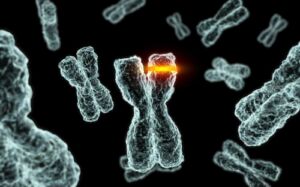Genome imprinting and uniparental disomy explain how a genetic condition is inherited.
In general, people inherit two copies of their genes, one from each parent. Usually both copies of each gene are active in cells. However, in some only one of them is turned on. Which copy of the gene is active, depends on the parent’s origin. This phenomenon is known as genome imprinting.
For example, if the allele (gene variant) inherited from the father is imprinted, it is silenced and only the allele from the mother is expressed; if the allele from the mother is imprinted, then only the allele from the father is expressed.
Uniparental disomy
Genomic imprinting can cause disease when there are errors in early reproductive stage (eggs and sperms). One common complication is uniparental disomy (UPD), this is when a person inherits two copies of a chromosome from one parent and not two copies from the other parent.
If the chromosome in question does not contain the imprinted region, UPD may not have a detrimental effect, but if chromosomes 11 or 15 are affected, the situation may be more complicated.
Some genes in these regions are inactivated by maternal or paternal imprinting, so that individuals who inherit two copies from one parent lack active copies of some essential genes. There is a possibility that even if they are present in the genome.
Knowledge Check
Which chromosomes lead to complex situations in UPD and why?
Chromosomes 11 or 15 when affected result in complicated situations. This is because some genes in these regions are inactivated by maternal or paternal genome imprinting.




